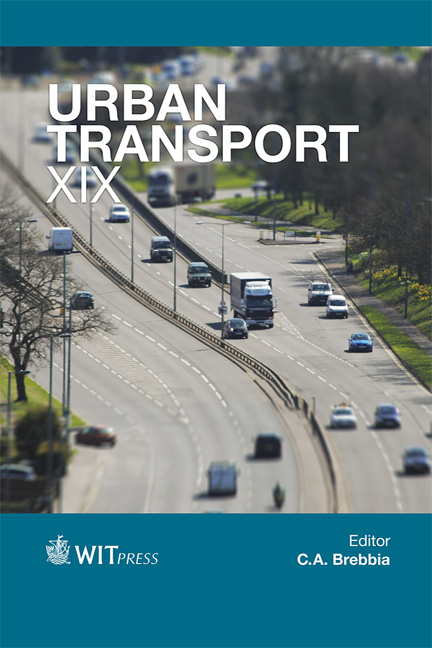Before And After Studies To Reduce The Gap Between Road Users And Authorities
Price
Free (open access)
Transaction
Volume
130
Pages
10
Page Range
663 - 672
Published
2013
Size
151 kb
Paper DOI
10.2495/UT130531
Copyright
WIT Press
Author(s)
Z. Ebrahim & H. Nikraz
Abstract
The paramount importance of safety for busy urban roads always comes from the responsibility towards protecting the vulnerable road users, who seem to be the victims in most road crashes. Thus, authorities tend to focus on reducing the travelling speed of the vehicles, whereas some road users may consider the move to interfere with mobility. In this paper, a case study of two roads in Perth was conducted to compare two engineering treatments of speed reductions on these two busy shopping strips. The study aim is to illustrate the effect of using the electronic flashing signs rather than the standard signs in terms of speeding reduction and harm minimisation. Crash data were analysed and supported the safety benefits of the electronic flashing signs. In terms of speeding, a Chi- Square analysis showed that there is an association between the engineering treatment type and the three detected speeding levels. Authorities have measured the reduction of the travelling speeds of vehicles and found it to be encouraging. The study found that despite the reduced crashes after the treatments the public seem to show different attitudes to the above safety issue. The study has shown that certain engineering measures can reduce the travelling speed of the vehicles without disturbing mobility. Road users are concerned with delay and other behavioural issue, the results of the questionnaires reveal. There are clear, positive safety benefits from the case study. Keywords: before and after study, speeding, electronic signs, traffic signs, road crashes, Chi-Square, MANOVA and cluster.
Keywords
Keywords: before and after study, speeding, electronic signs, traffic signs, road crashes, Chi-Square, MANOVA and cluster.





